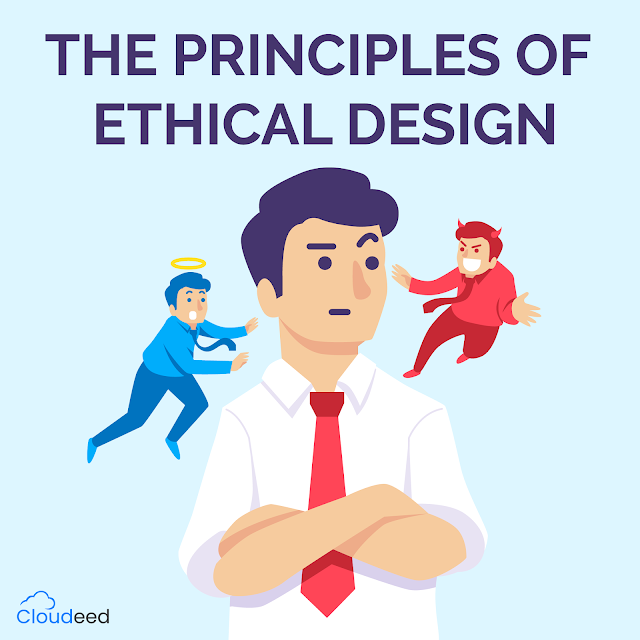The principles of ethical design
Ethical design seems like a straightforward concept. It’s important for designers to understand the impact they have and the steps they can take to make products that are good for your users, good for business and good for society.
What is ethical design?
—
Ethical design is designing great products alongside your morals and beliefs and the principles of your business. What you create, whether a website, a marketing campaign or a product, has an effect on real people and those effects can create ripples.
The principles of ethical design
—
Many of the principles for ethical design revolve around respect for human rights, effort and experience, and are even inspired by the United Nations Declaration of Human Rights. The “Ethical Hierarchy of Needs” pyramid created by Aral Balkan and Laura Kalbag illustrates the core of ethical design and how each layer of the pyramid rests and depends on the layer beneath it to ensure that the design is ethical.
Let’s go over some basic principles that fulfill these needs including some ethical design examples.
Usability
These days usability should be a basic requirement. An unusable product is considered a design failure. More specifically the design should help the user accomplish what they want, meet their needs, and be easy and pleasant to use.
Accessibility
Accessibility should be incorporated in the development process of any product or service being built, not as an afterthought at the end. Products are always designed for the “targeted customer” but think of who is (un)intentionally left out. Often these are folks with disabilities. As an example, website design is not always optimized for those with vision impairment despite the fact that, according to the World Health Organization, at least 1 billion people are blind or visually impaired.
Privacy
Privacy issues are always a hot topic with digital design, with Alexa listening to our conversations, Google monitoring our clicks and Facebook reading our private messages. The best ethical design practice would be to develop designs that only collect personal information that is in the best interest of the users.
Transparency & persuasion
Best practice for ethical design is to provide transparency so that users can make informed choices, which includes providing clear ways for users to opt out of memberships easily. For example, on Amazon you can get free shipping if you do a trial of Amazon Prime. However, after your free trial is up, Amazon will automatically charge you for the full cost of the annual membership unless you manually cancel and there isn’t any warning or notification before they charge you.
User involvement
Ultimately, the designer is designing for the user. Doesn’t it make sense to include users in design decisions, from users’ needs and ideas. Your design will become a part of their life, and ideally that becomes a positive experience.
Focus
Designers should understand that whatever tool or service they are creating is just a small part of any user’s world and that your user also needs a break sometimes. These products should be there when the user needs them and stay out of their way whenever they don’t.
Sustainability
Climate change is a global issue and it’s time that we as designers consider the impact of our work on the world’s environment, resources and climate. An excellent example of an ethical design trend embracing sustainability is circular design which uses a closed loop design strategy where resources are continuously repurposed.
How to make your design more ethical
—
The easiest way to adopt ethical design is to ingrain these principles into your practice from the beginning. Rather than getting toward the end of the process and trying to add more accessible elements or tacking on privacy notification as an afterthought simply to protect the business, start with a clear understanding and intention.
Keep track of assumptions
The problem with design based on assumption is that it doesn’t involve the people you are serving and could result in potential risks or consequences for the users, the company or society. By keeping track of each assumption, you’ll never forget about the limitations of your design.
Try ‘Dark Reality’ sessions
The first important step towards ethical design is to start asking the hard questions in order to identify your product’s weaknesses and potential consequences. This is called a ‘Dark Reality’ session, a practice started by the ancient Greek philosopher Socrates. This technique focuses on stress-testing a concept with challenging questions.
Ethical design predicaments and how to deal with them
There are many reasons why ethical design is overlooked or ignored. Some might say it is inconvenient, too complex, or there is a lack of time and budget. As mentioned, these concerns can be reduced by starting early with the right expectations and intentions. Change can’t happen overnight. But by taking small steps at every opportunity, you can reach for long-term, organizational change.
Designing an ethical future
Out of responsibility to the environment, human kind and yourself, keep in mind these ethical design principles when moving forward with your future projects. You can even make a pledge to make this part of your code of conduct as a designer.


Comments
Post a Comment